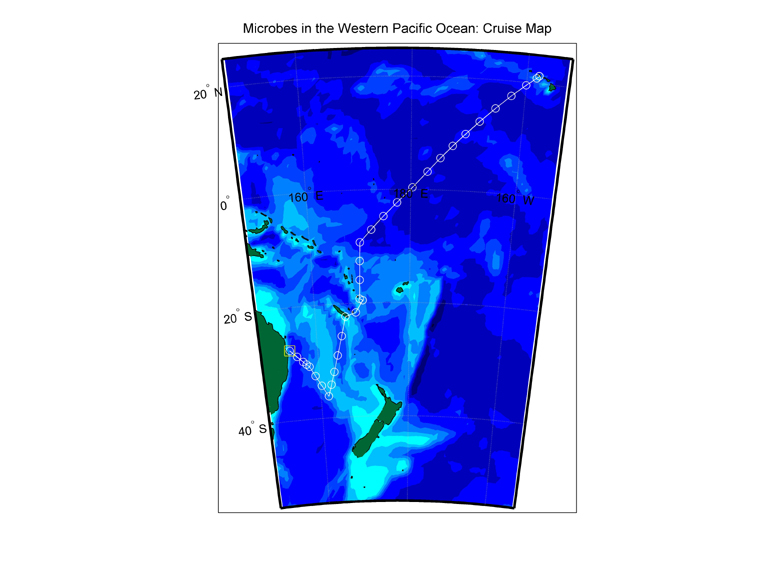 ©2020 Biological and Chemical Oceanography Data Management Office.
©2020 Biological and Chemical Oceanography Data Management Office.Funded by the U.S. National Science Foundation
In most tropical and subtropical ecosystems, the prokaryotic cyanobacteria Prochlorococcus plays a critical role in ecosystem structure and biogeochemistry because it is the numerically dominant photoautotrophic picoplankter. Although the worldwide distributions of Prochlorococcus are generally understood, the precise reasons for its overwhelming ecological success have remained elusive. This picture has recently become complicated by the discovery that Prochlorococcus is not monophyletic and that different genetic clades of Prochlorococcus have remarkably different distributions with depth and over oceanic basins. Thus, our understanding of factors that structure Prochlorococcus populations in the natural environment, and our ability to predict how this structure might respond to environmental changes, are limited. The PIs will address this by focusing on naturally occurring populations in the Western Pacific Warm Pool, an area where Prochlorococcus is known to dominate, but where there are no data on clade abundances. In addition to being a large region of the Pacific Ocean with significance to the global carbon cycle, the Western Pacific Warm Pool (WPWP) is of particular interest because it is typically highly stratified, with surface waters having extreme temperatures and light levels compared to those at depth. Populations of Prochlorococcus at the surface and at depth experience different environmental pressures, and may belong to different clades and have different adaptive physiologies. The PIs will test this hypothesis on a cruise from Hawaii to Brisbane, Australia through the stratified WPWP. Samples from this transect will be used to quantify (using quantitative PCR) the six known clades of Prochlorococcus and to search for new clades (using clone libraries and isolates) and their abundances. The ultimate goal is to relate clade abundances to temperature, light, nutrient concentrations and other measured biological, chemical and physical variables.
This project will encompass multiple layers of outreach to scientists and the scientific community at large. Data and strains will be deposited at national repositories and results will be disseminated through publications, professional meeting presentations, and a project web site. Undergraduates and graduate students will be trained, and students will be an integral part of the data collection, analysis, and dissemination phases and will be encouraged to present at national meetings. Cross-institutional training will enhance graduate student education. The PIs will integrate results from this project into undergraduate and graduate curricula at their home institutions and will be attending the NSF sponsored 'Scientific Inquiry in the K-16 Classroom' seminar to develop methods to link results to primary education. The PIs will use presentations and activities with local outreach groups, such as the Hawaii Academy of Sciences, to encourage scientific understanding through mentoring, science symposia and science competitions for primary and secondary school students.

Principal Investigator: Zackary I. Johnson
University of Hawai'i (UH)
Co-Principal Investigator: Erik Zinser
University of Tennessee Knoxville (UTK)
Contact: Zackary I. Johnson
Duke University